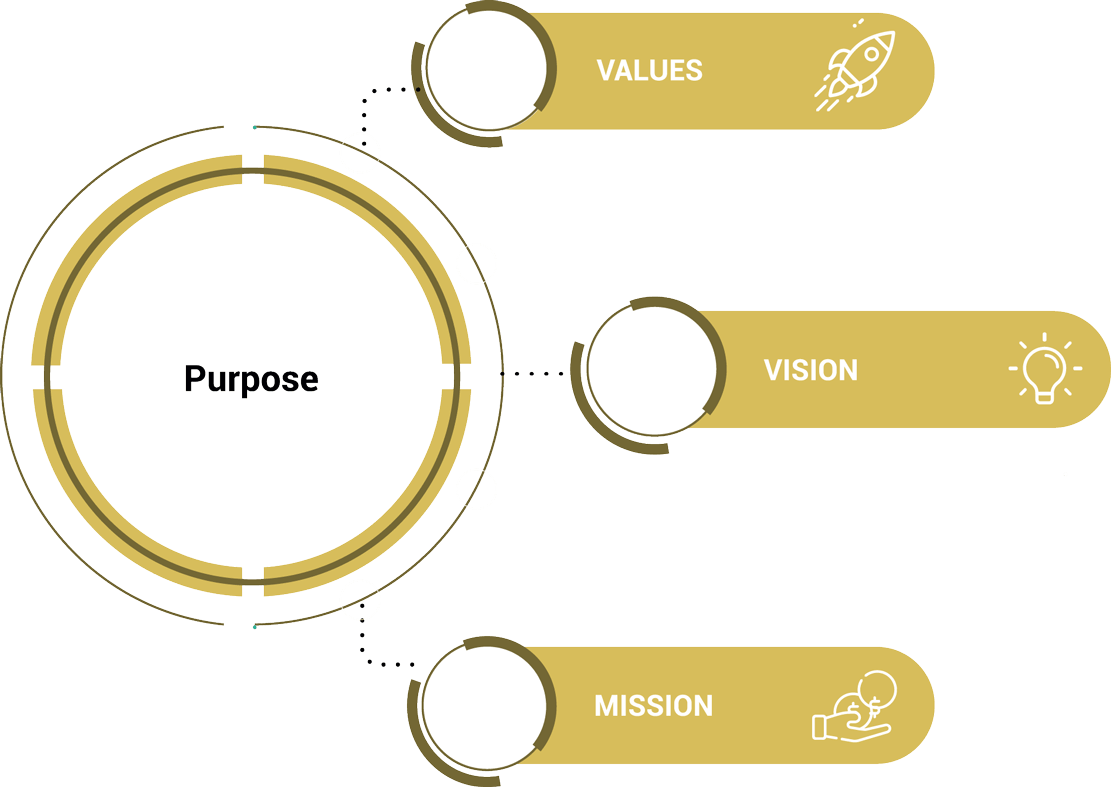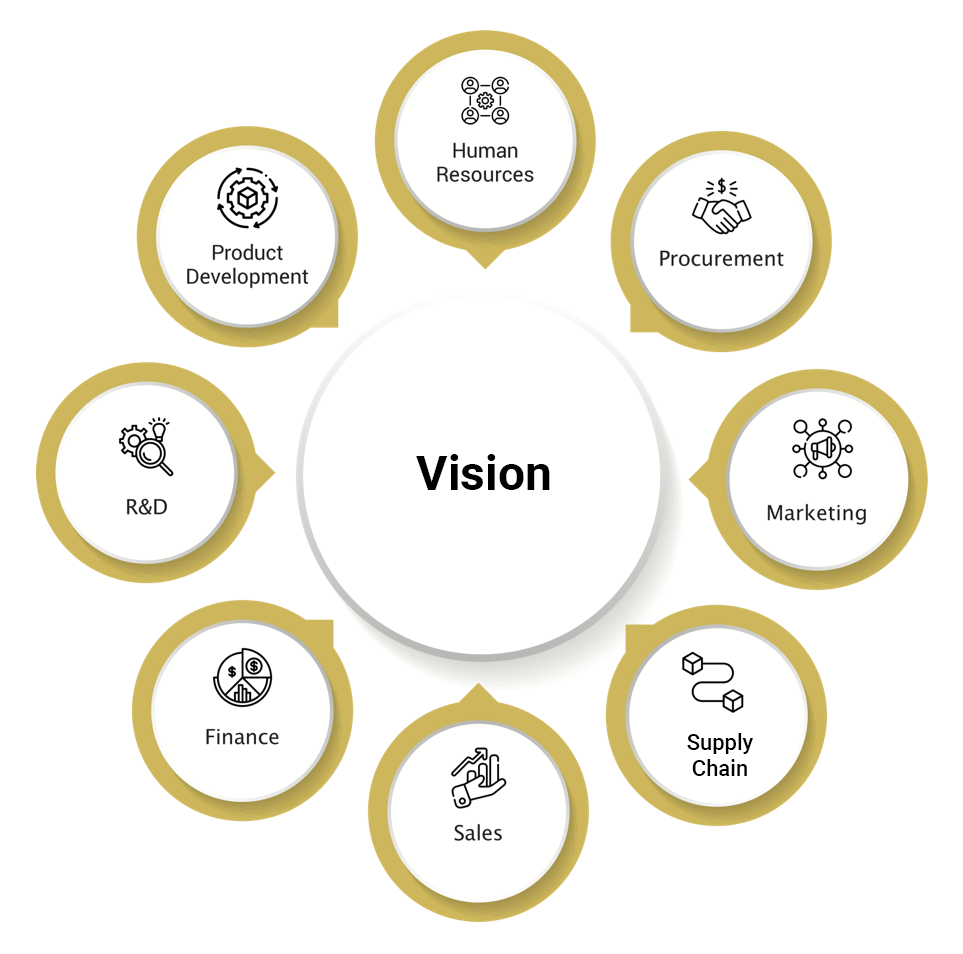It’s common for companies to take a fresh look at their business goals. The strategic planning process guides your organization through its long-range planning and assessments of underlying business models. In these instances, strategic planning optimizes your business and organizational purpose, your vision statement, and organizational goals. In cases where this is already well established or shorter-term sprints are needed, see our corporate strategy services for more information.
Strategic Planning: Business and Organizational Purpose
Leading the way towards organizational goals, with common purpose.
Organizational purpose
Commitment to a cause is a primary driver of our human activity, and while a sense of individual purpose is important to us all as a source of personal ambition and drive, a sense of organizational purpose is essential as a foundation for the collective aspirations and motivation of a group.
In today’s business environment, purpose is the core energy that defines an organization’s culture. It bridges gaps in communication and unites the day-to-day efforts of every stakeholder across your business units and within each strategic function. It defines what businesses you compete in; it fuels your R&D and guides your product design and development; and it informs your marketing and sales efforts. Purpose attracts consumers and gives them reason to choose you, and it guides how you connect physically and emotionally with them as customers.
Purpose is at its heart the most central component of an organization for it defines its values and vision. It provides a foundation for measurement and animates every stakeholder toward meeting your organizational goals. A sense of purpose creating bridges for your teams by providing the motivation needed to propel and guide their momentum. Outwardly, your purpose clarifies how your organization will interact with the world through its products and services.

Company values
Values are the fundamental beliefs that anchor us and give us guidelines for our attitudes and behaviors. Having values help us determine what is and isn’t important, and define the personal qualities and abilities we choose to exemplify. Values are the principles shared by everyone involved in achieving the purpose of the organization. Values define the kind of organization you want to be; they are reflected in the manner in which people treat each other; and they are exemplified in the way you organization interacts with the world.
Whether explicit in your policies and procedures or implicit in what employees see and feel every day, organizational values need to be congruent with your actions for the highest levels of personal involvement, accountability, productivity, and ethical conduct. Stating your organizational values creates the opportunity to establish trust within your teams. And continuously calibrating your actions as an organization to values you advocate helps build that trust and accountability over time. With shared values, you celebrate success together when you exceed your targets and transparently provide and welcome lessons for improvement in the light of failure.
A vision for the future
When we have a purpose, we form a vision of ourselves, mental pictures that depict our hopes and dreams; a collage of what we want to be and that for which we want to be known. Our vision of ourselves become the driving force that influences the experiences and accomplishments we intend to achieve in order to fulfill that vision.
In a similar vein, vision is the mental image of the future you desire for your organization. More than just a goal, vision is the embodiment of your hopes and dreams in whatever field you pursue. A shared vision that reflects the collective values of an organization can be an extremely powerful rally tool that inspires and motivates every stakeholder to achieve an objective.
Without a shared vision of how the organization will accomplish its purpose, business units and functional areas will form their own visions of the future for their areas of work, ultimately pulling the organization in different directions, potentially compromising your overall effectiveness and efficiency.
With shared vision conveyed in the strategic plan, every stakeholder will be on the same page, pulling in the same direction, focused and united in effort. This shared vision motivates everyone involved to take a long-term view of the organization so that its objective may be achieved. It creates a cultural identity that permeates every effort. A shared vision influences the experiences and accomplishments everyone intends to achieve in order to fulfill the mental image of what they want to achieve for the organization.
Mission statements
While purpose is the “Why” of an enterprise, your organization’s mission statement is the “What”. Mission defines your organization’s business, its objectives, and the attitude and approach everyone involved will take to achieve the goals of the strategic plan. Your mission statement provides an understanding of execution by communicating intent and direction of strategic thinking, whether the undertaking is to launch a product line, enter a new market, develop new software, or find a cure.
Through the execution of the mission, employees are able to realize the meaning and purpose of their day-to-day efforts and how their roles makes possible their shared purpose. Accomplishing tasks together helps employees see the cumulative power of their efforts and the positive results of their contributions. Mission accomplishment boosts employee morale and commitment when they see their vision come to fruition.
Organizational missions need not be immutable pursuits. Viewing a mission or a series of missions with flexibility is a powerful attribute of an agile, learning organization and key to both proactively planning for industry trends and reacting to new events.
This is how Morant McLeod approaches Business and Organizational Purpose, as the intrinsic foundation for the shared Values, Vision, and Mission of your organization.
Let’s Discuss.
Our consultants are happy to lend ideas and approaches to support your decision making. Contact us today for a quick strategy session.

READ MORE OF OUR INSIGHTS & THOUGHT LEADERSHIP ON STRATEGIC PLANNING
Want to hear more from us?
Receive ideas, innovative business approaches, and new study information directly to your inbox.





